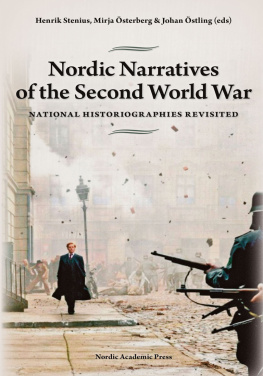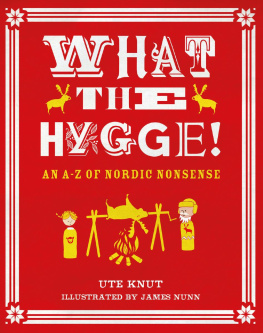About the Book and Author
With the accelerated Soviet buildup of its Baltic fleet, the development of Soviet bases on the Kola Peninsula, and the related expansion of Allied forces, Scandinavia has once again become a potential theater of war. Looking at the strategic implications of the Soviet threat in northern Europe and possible NATO responses, the author examines the competitive activities of intelligence services; the interactions among the media, public opinion, and politics; problems of arms control; efforts to stop the export of sensitive technology; and the phenomenon of peacetime military exercises.
But what if either limited or all-out war comes? The author describes the strategies and forces of the two sides and examines the key role of Iceland, emphasizing the strategic element of control of the waters. Potentially this is an area with four major actors: NATO, the USSR, the neutralsFinland and Swedenand the potentially dangerous but probably unreliable Warsaw Pact allies. It is a region of major importance that NATO must defend as its northern shield.
John C. Ausland is a retired Foreign Service officer. His posts included deputy chief of mission in the U.S. embassy, Oslo, and executive secretary, U.S. SALT Delegation.
First published 1986 by Westview Press, Inc.
Published 2018 by Routledge
52 Vanderbilt Avenue, New York, NY 10017
2 Park Square, Milton Park, Abingdon, Oxon OX14 4RN
Routledge is an imprint of the Taylor & Francis Group, an informa business
Copyright 1986 Taylor & Francis
All rights reserved. No part of this book may be reprinted or reproduced or utilised in any form or by any electronic, mechanical, or other means, now known or hereafter invented, including photocopying and recording, or in any information storage or retrieval system, without permission in writing from the publishers.
Notice:
Product or corporate names may be trademarks or registered trademarks, and are used only for identification and explanation without intent to infringe.
Library of Congress Catalog Card Number: 86-51031
ISBN 13: 978-0-367-00878-9 (hbk)
During the past decade, the nordic area has emerged from the shadows. Congress has made studies about US interests in this part of the world. In the spring of 1985, the Center for international Affairs at Harvard University held a seminar. This brought together people from the United States and the nordic area. An American-Norwegian military study group is exploring questions related to the defense of Norway. The SHAPE Technical Center in The Hague has made a study regarding NATO's northern flank.
The world media have not yet reflected this surge of interest. It emerges more clearly in the number of official visitors. In the early 1970s, the American Embassy in Oslo found it impossible to get senior American officials to visit Norway. Washington was too preoccupied with Viet Nam. Now the Embassy finds it impossible to keep them away. Senior officials and four star generals and admirals arrive in a steady stream.
In 1983, the University Press in Oslo published my book Norge og en tredje verdenskrig (Norway and a Third World War). The book had a good reception in Norway, and a number of people in other nordic countries read it also. Nevertheless, Westview Press considered the subject too narrow for the American audience and suggested that I expand it to cover the entire nordic area. As a result, I have for several years now been putting together a gigantic jig saw puzzle.
In addition to doing a great deal of reading, I have also revisited other nordic capitals. As a result, it has been possible to gather a number of additional pieces for the puzzle. Inevitably, however, the picture which I am presenting here is incomplete. This is partly because of limits of time but also because officials sometimes chose to keep some of the pieces hidden.
Since people with various levels of Knowledge of the nordic area will read this book, it was necessary to decide which audience to address. I have decided to direct it to people outside the nordic area. This has meant explaining some things which are common knowledge in this part of the world. This, however, is unavoidable.
You will notice that Norway looms somewhat larger than the other nordic countries. I have tried to minimize this, but the fact is that my knowledge of it is greater than of the others.
The reader will also notice there are no footnotes. There are several reasons for this. In the first place, I am often not sure where or when I learned much of what I know. Another factor is that many of the details have come from people who do not wish me to use their names. You will, however, see references to a number of printed sources in the text. You will also find at the end of the book a bibliographic note, which provides a guide to further reading.
Usually books about the nortnern region of Europe use a country by country approach. The military planners in the Pentagon and in Moscow do not, however, plan their strategies on a country by country basis. They look at the northern region as a whole. I have chosen, therefore, to use a subject rather than a country approach.
This book is about war and preparations for war. This does not mean that a Warsaw Pact-NATO conflict is inevitable or even likely. It is just that, if one did occur, the outcomes could vary greatly. Thus, this contingency warrants considerable thought. Failure to prepare for the possibility of such a conflict, both physically and mentally, will not make one less likely. On the contrary, failure to face up to today's world could encourage the Soviets to intensify their use of intimidation. This could in turn bring about the very war that we all hope to avoid.
This danger applies with particular force to the countries in the nordic area. Being small, they are intensely conscious that they live in the shadow of the Russian bear. Without a well informed public, governments find it difficult to cope with the Soviet technique of combining threats and promises.
Fortunately, in recent years most governments in the nordic countries have been more open about military matters. More and more information has become available. (As we shall see, nonofficial sources have released much of this.) Consequently, it is now possible to conduct an informed public discussion of defense matters.
The main inhibition today springs not from the lack of information. It comes from the reluctance of governments and media to discuss the security policies of their nordic neighbors openly. Thus, Danes and Norwegians hesitate to speak too loudly about their concerns regarding the military postures of Finland and Sweden. The Finns and Swedes are reluctant to speak frankly about the NATO buildup in Denmark and Norway. There is now considerable information available on the Soviet buildup on the Kola Peninsula and in the Baltic. Nevertheless, people often find it more convenient to focus their anxiety on the US and NATO response.
In writing this book, I have been well aware that not everyone will approve of my discussing some subjects. This applies particularly to intelligence. My aim, however, is to present as accurate picture as possible to the American reader. Thus it is not possible to leave out subjects simply because they are politically sensitive. On the contrary, their sensitiveness makes it even more important to discuss them.










